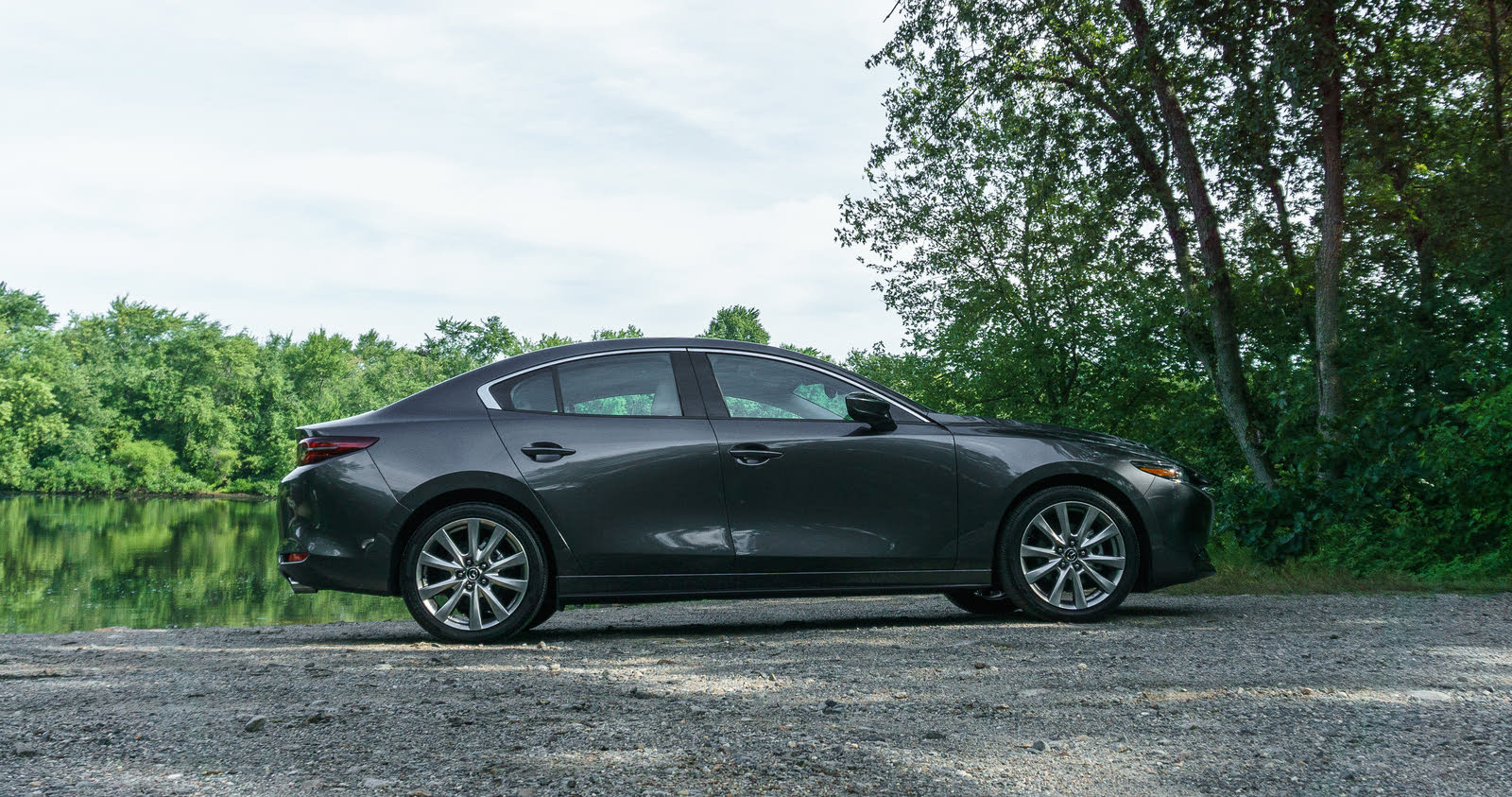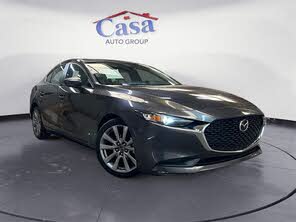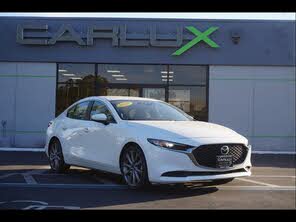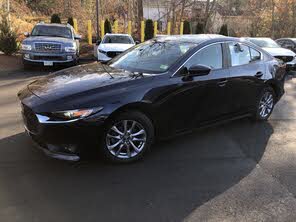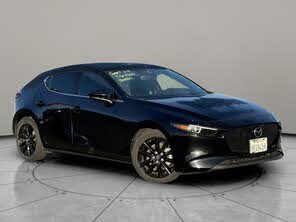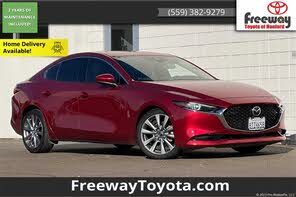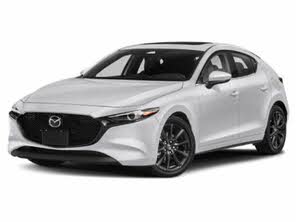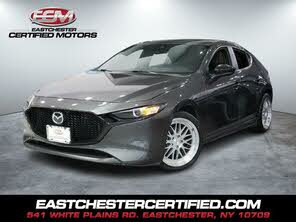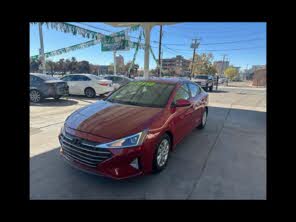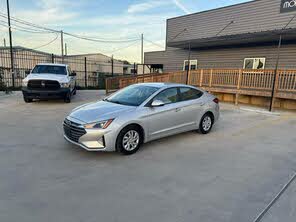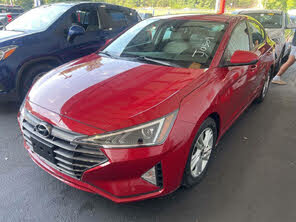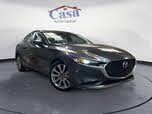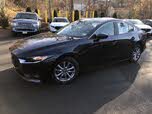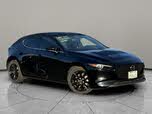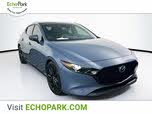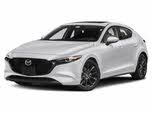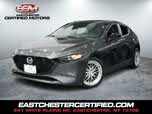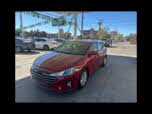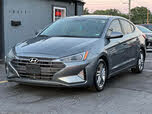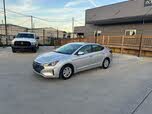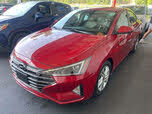2020 Mazda MAZDA3 vs 2019 Hyundai Elantra
Overview | |
MSRP$17,200 | MSRP$21,500 |
Average price$13,187 | Average price$19,171 |
Listings875 | Listings204 |
Ratings & Reviews | |
User Reviews | User Reviews |
Expert reviews8.2 out of 10 | Expert reviews7.8 out of 10 |
Pros
| |
2019 Hyundai Elantra Reviews SummaryCustomer satisfaction is dependent on multiple factors. For example, let's say you go out to a new restaurant. Even if the service is great, or the bill is inexpensive, or the restaurant has a lovely ambiance, you probably won't go back if the food doesn't taste good. The updated and upgraded 2019 Hyundai Elantra is like that—unless you buy the turbocharged Sport trim. | |
2020 Mazda MAZDA3 Reviews SummaryMazda redesigned the Mazda3 in 2019, taking what was already one of the best-looking compact cars on the market, and attempting to dress it up even further. The goal was to elevate the brand into near-luxury territory. While the 2020 Mazda3 may not compete on the same plane as a Mercedes-Benz CLA-class or a BMW 2 Series, it feels undeniably premium when benchmarked against more mass-market competitors. | |
Popular Features & Specs | |
Engine2.0L 147 hp I4 | Engine2.5L 186 hp I4 |
Drive TrainFWD | Drive TrainFWD |
Seating Capacity5 | Seating Capacity5 |
Horsepower147 hp @ 6200 rpm | Horsepower186 hp @ 6000 rpm |
MPG City26 | MPG City27 |
MPG Highway36 | MPG Highway36 |
Engine | |
Engine Name2.0L 147 hp I4 | Engine Name2.5L 186 hp I4 |
Torque132 lb-ft @ 4500 rpm | Torque186 lb-ft @ 4000 rpm |
Horsepower147 hp @ 6200 rpm | Horsepower186 hp @ 6000 rpm |
DrivetrainFWD | DrivetrainFWD |
Fuel Economy | |
MPG City26 | MPG City27 |
MPG Highway36 | MPG Highway36 |
Interior | |
Seating Capacity5 | Seating Capacity5 |
Safety | |
Front Crash Overall4 | Front Crash Overall5 |
Side Crash Overall4 | Side Crash Overall5 |
Dimensions & Capacity | |
Cargo Space14.4 cu ft | Cargo Space13.2 cu ft |
Curb Weight2811 lbs | Curb Weight3071 lbs |
Height56.5 in | Height56.9 in |
Length181.9 in | Length183.5 in |
Width70.9 in | Width70.7 in |
Wheelbase106.3 in | Wheelbase107.3 in |
Maximum Payload | Maximum Payload1008 lbs |
Number of doors4 | Number of doors4 |
Overview | ||
MSRP | $17,200 | $21,500 |
Average price | $13,187 | $19,171 |
Listings | ||
Ratings & Reviews | ||
User reviews | ||
Expert reviews | 8.2 out of 10Read full review | 7.8 out of 10Read full review |
Pros & cons | Pros
| |
Summary | Customer satisfaction is dependent on multiple factors. For example, let's say you go out to a new restaurant. Even if the service is great, or the bill is inexpensive, or the restaurant has a lovely ambiance, you probably won't go back if the food doesn't taste good. The updated and upgraded 2019 Hyundai Elantra is like that—unless you buy the turbocharged Sport trim. | Mazda redesigned the Mazda3 in 2019, taking what was already one of the best-looking compact cars on the market, and attempting to dress it up even further. The goal was to elevate the brand into near-luxury territory. While the 2020 Mazda3 may not compete on the same plane as a Mercedes-Benz CLA-class or a BMW 2 Series, it feels undeniably premium when benchmarked against more mass-market competitors. |
Video | ||
Popular Features & Specs | ||
Engine | 2.0L 147 hp I4 | 2.5L 186 hp I4 |
Drive Train | FWD | FWD |
Seating Capacity | 5 | 5 |
Horsepower | 147 hp @ 6200 rpm | 186 hp @ 6000 rpm |
MPG City | 26 | 27 |
MPG Highway | 36 | 36 |
Engine | ||
Engine Name | 2.0L 147 hp I4 | 2.5L 186 hp I4 |
Torque | 132 lb-ft @ 4500 rpm | 186 lb-ft @ 4000 rpm |
Horsepower | 147 hp @ 6200 rpm | 186 hp @ 6000 rpm |
Drivetrain | FWD | FWD |
Fuel Economy | ||
MPG City | 26 | 27 |
MPG Highway | 36 | 36 |
Interior | ||
Seating Capacity | 5 | 5 |
Safety | ||
Front Crash Overall | 4 | 5 |
Side Crash Overall | 4 | 5 |
Dimensions & Capacity | ||
Cargo Space | 14.4 cu ft | 13.2 cu ft |
Curb Weight | 2811 lbs | 3071 lbs |
Height | 56.5 in | 56.9 in |
Length | 181.9 in | 183.5 in |
Width | 70.9 in | 70.7 in |
Wheelbase | 106.3 in | 107.3 in |
Maximum Payload | 1008 lbs | |
Number of doors | 4 | 4 |
The 2019 Hyundai Elantra received a significant facelift, featuring new styling elements forward of the windshield and front doors, redesigned wheels, and a revamped trunk lid, taillights, and rear bumper. While the previous model had a more conservative and upscale look, the 2019 version adopted a more geometric and kaleidoscopic design, which may not have been as universally appealing. Inside, subtle changes improved the interior, with new air vents, a carbon-texture finish on some plastic housings, updated gauges, and revised dashboard controls. The interior quality was high, with a robust and solid shifter, although some materials felt inexpensive, which is typical for a compact car. The Elantra was available in various trims, including SE, SEL, Value Edition, Eco, and Limited, with prices starting at $17,100 plus destination charges.
The 2020 Mazda MAZDA3, available in both sedan and hatchback body styles, stood out with its curvaceous and unique design, especially the hatchback. The sedan, while more traditional, still looked special and aimed to compete with upmarket models. The test vehicle, a sedan with the Premium Package and AWD, featured 18-inch alloy wheels, a blacked-out mesh front grille, and round running lamps. The side profile was sculpted but not angular, unlike many competitors. Inside, the Mazda3 embraced simplicity and minimalism, with a cockpit-style feel for the driver, creamy white leather upholstery, and slim buttons on the steering wheel. However, the sheet metal felt less sturdy, with a light and hollow sound when closing the trunk or doors.
The 2019 Hyundai Elantra, equipped with a 2.0-liter 4-cylinder engine producing 147 horsepower, relied on a 6-speed automatic transmission to power the front wheels. While acceleration was acceptable, the driving dynamics did not inspire much excitement. The Elantra offered Normal, Sport, and Smart driving modes, with Sport mode adding unwelcome weight to the steering. The EPA estimated a combined fuel economy of 32 mpg, and during testing, the car returned 29.3 mpg on a modified loop and 32.4 mpg after a week of driving. Handling was decent, with no significant praise or criticism for the steering and brakes. The ride quality could be busy due to the inexpensive torsion-beam rear-axle suspension.
The 2020 Mazda MAZDA3, powered by a 2.5-liter SkyActiv four-cylinder engine with 186 horsepower and 186 pound-feet of torque, offered a more powerful and predictable performance. However, it lacked the immediate punch of turbocharged engines. The Mazda3's steering remained precise, with little roll through corners, but the torsion beam rear suspension, a cost-cutting measure, resulted in a less sophisticated ride compared to the previous multi-link setup. The Mazda3 was available with a six-speed manual transmission, but only in the FWD hatchback model with the preferred or premium package. Most models, including the test vehicle, featured a six-speed automatic transmission.
The 2019 Hyundai Elantra provided good front-seat comfort for a compact car, with height-adjustable seats for both the driver and front passenger. Most trims included heated front seats, a leather-wrapped tilt-and-telescopic steering wheel, and dual-zone automatic climate control. However, backseat comfort was less impressive, with hard plastic front seatbacks and no air conditioning vents or USB ports for rear passengers. Interior storage was decent, with a good-size center-console storage bin, a sizable glove box, and a tray forward of the shifter. The trunk offered 14.4 cubic feet of space, and most trims included a hands-free trunk release.
The 2020 Mazda MAZDA3, with a sedan length of 183.5 inches on a 107.3-inch wheelbase, provided plenty of room for the driver, with ample headroom and supportive front seats. The back seat was tight on legroom, but the soft front seatbacks mitigated discomfort. The materials held up well, even with over 10,000 miles on the test vehicle. The large transmission hump ahead of the rear middle seat was a drawback. The sedan's trunk offered 13.2 cubic feet of cargo space, while the hatchback provided 20.1 cubic feet, both on the smaller side for the segment.
The 2019 Hyundai Elantra, except for the base SE, came with a 7-inch touchscreen infotainment system featuring Apple CarPlay, Android Auto, and satellite radio. The Limited trim included an Infinity premium sound system, and the Ultimate Package added an 8-inch display, navigation, and SiriusXM Data Services. The infotainment system was user-friendly, with a good balance of knobs and buttons. The Limited trim also offered a free 3-year trial subscription to Blue Link services, compatible with smartwatches and smart home devices.
The 2020 Mazda MAZDA3 featured an 8.8-inch infotainment display high on the dashboard, blending seamlessly into the design. However, it was not a touchscreen, with all functions managed via a rotary dial controller between the front seats. The system included Apple CarPlay, Android Auto, Bluetooth connectivity, and Sirius XM satellite radio. The new infotainment software was faster, with sharp graphics and thin fonts that complemented the minimalist cabin design. The head-up display reflected off the windshield, enhancing the premium feel.
The 2019 Hyundai Elantra included important driver-assistance and collision-avoidance systems starting with the SEL trim, such as forward-collision warning, automatic emergency braking, lane-departure warning, lane-keeping assist, blind-spot monitoring, rear cross-traffic alert, and a driver-monitoring system. The Limited trim added adaptive cruise control, pedestrian detection, automatic high-beam headlights, and a Safe Exit system. The Elantra received top marks from the IIHS, except for an Acceptable rating for LATCH child-seat anchors. The NHTSA gave it a 4-star overall rating.
The 2020 Mazda MAZDA3 was a Top Safety Pick+ by the IIHS, with top scores in all crash tests and a Good rating for the Premium Package's LED headlights. The NHTSA awarded it a five-star overall safety rating. The Mazda3 offered advanced driver assistance systems, including forward-collision warning, lane-departure warning, adaptive cruise control, automatic emergency braking, blind-spot monitoring, rear cross-traffic alert, and dynamic brake support.
CarGurus highlights

According to CarGurus experts, the overall rating for the 2019 Hyundai Elantra is 8.2 out of 10, while the 2020 Mazda MAZDA3 scores 7.8 out of 10. Based on these ratings, the 2019 Hyundai Elantra is the recommended choice, offering better value, a user-friendly infotainment system, and a spacious trunk.
Choose the 2020 Mazda MAZDA3 if:
- You value a stylish and unique exterior design.
- You prefer a minimalist and premium-feeling interior.
- You seek advanced safety features and top safety ratings.
Choose the 2019 Hyundai Elantra if:
- You prioritize a lower starting price and value for money.
- You want a user-friendly infotainment system with physical controls.
- You need a spacious trunk for a compact car.
CarGurus highlights

According to CarGurus experts, the overall rating for the 2019 Hyundai Elantra is 8.2 out of 10, while the 2020 Mazda MAZDA3 scores 7.8 out of 10. Based on these ratings, the 2019 Hyundai Elantra is the recommended choice, offering better value, a user-friendly infotainment system, and a spacious trunk.
Choose the 2020 Mazda MAZDA3 if:
Shop Now- You value a stylish and unique exterior design.
- You prefer a minimalist and premium-feeling interior.
- You seek advanced safety features and top safety ratings.
Choose the 2019 Hyundai Elantra if:
Shop Now- You prioritize a lower starting price and value for money.
- You want a user-friendly infotainment system with physical controls.
- You need a spacious trunk for a compact car.

By: CarGurus + AI
At CarGurus, our team of experienced automotive writers remain at the heart of our content operation, conducting hands-on car tests and writing insightful guides that are backed by years of industry experience. To complement this, we are harnessing AI to make our content offering more diverse and more helpful to shoppers than ever. To achieve this, our AI systems are based exclusively on CarGurus content, ratings and data, so that what we produce is both unique to CarGurus, and uniquely helpful to car shoppers.
